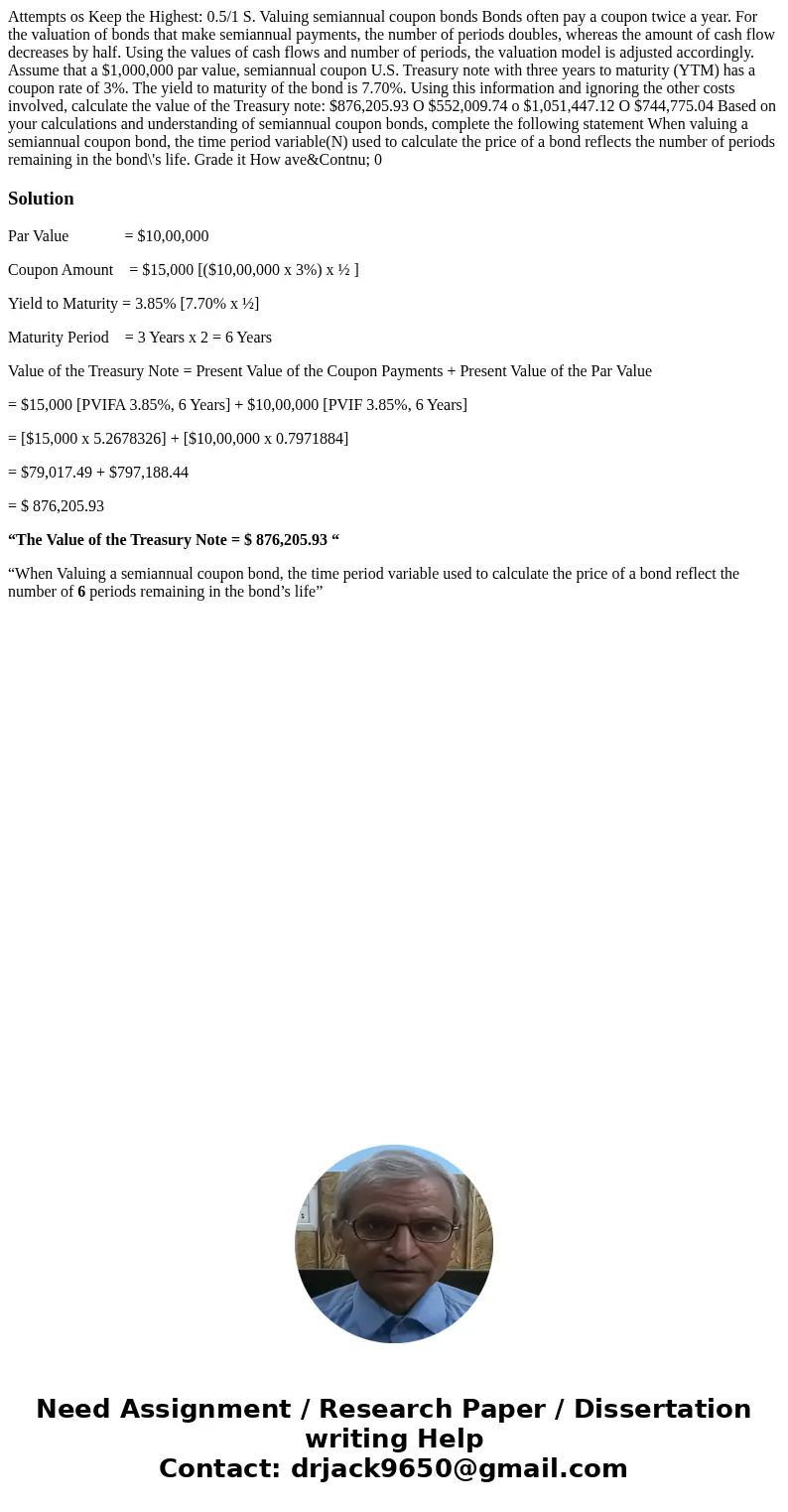Attempts os Keep the Highest 051 S Valuing semiannual coupon
Attempts os Keep the Highest: 0.5/1 S. Valuing semiannual coupon bonds Bonds often pay a coupon twice a year. For the valuation of bonds that make semiannual payments, the number of periods doubles, whereas the amount of cash flow decreases by half. Using the values of cash flows and number of periods, the valuation model is adjusted accordingly. Assume that a $1,000,000 par value, semiannual coupon U.S. Treasury note with three years to maturity (YTM) has a coupon rate of 3%. The yield to maturity of the bond is 7.70%. Using this information and ignoring the other costs involved, calculate the value of the Treasury note: $876,205.93 O $552,009.74 o $1,051,447.12 O $744,775.04 Based on your calculations and understanding of semiannual coupon bonds, complete the following statement When valuing a semiannual coupon bond, the time period variable(N) used to calculate the price of a bond reflects the number of periods remaining in the bond\'s life. Grade it How ave&Contnu; 0 
Solution
Par Value = $10,00,000
Coupon Amount = $15,000 [($10,00,000 x 3%) x ½ ]
Yield to Maturity = 3.85% [7.70% x ½]
Maturity Period = 3 Years x 2 = 6 Years
Value of the Treasury Note = Present Value of the Coupon Payments + Present Value of the Par Value
= $15,000 [PVIFA 3.85%, 6 Years] + $10,00,000 [PVIF 3.85%, 6 Years]
= [$15,000 x 5.2678326] + [$10,00,000 x 0.7971884]
= $79,017.49 + $797,188.44
= $ 876,205.93
“The Value of the Treasury Note = $ 876,205.93 “
“When Valuing a semiannual coupon bond, the time period variable used to calculate the price of a bond reflect the number of 6 periods remaining in the bond’s life”

 Homework Sourse
Homework Sourse